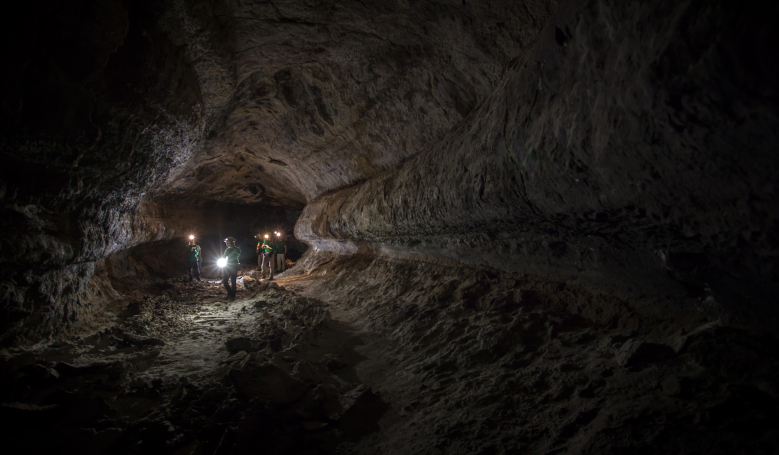By comparing data on lava tubes on Earth with satellite images taken by interplanetary probes, Italian researchers have been able to work out the size of similar structures on the Moon and Mars and have found them to be huge; so huge, they could host planetary bases say the scientists studying them.
Lava tubes on Earth can be found around the globe from Hawaii, the Canary Islands, Australia to Iceland and as the name suggests they are natural conduits through which lava travels beneath the surface of a lava flow.
They are formed by the crusting over of lava channels and pahoehoe flows – the smooth, fluid type of lava flow, not the jagged, rough type called aa (or a’a).
On this planet, lava tubes can be up to 14–15 metres (46–49 feet) wide, run anywhere from 1–15 metres (3 – 49 ft) below the surface and are a sight to behold, but seldom a place you would consider making as a home.
However on a world with little atmospheric protection from the constant bombardment of harsh solar radiation, or one that suffers from devastating dust storms, they could make for a fast and easy way to keep astronauts safe.
Checking that a potential underground home on another planet or moon is big enough or that it hasn’t collapsed before arriving is another matter altogether though, but researchers at two universities in Italy say they have been been able to measure the sizes of lava tubes on the Moon and Mars and establish how stable they are.
Potential lava tubes on the Moon have been spotted before and were identified due to the presence of a "skylight", a place in which the roof of the tube has collapsed, leaving a circular hole that can be observed by overhead orbiters.
Using satellite images and digital terrain models (DTMs) of lunar and Martian volcanic regions where skylights and other features known as collapse chains (collapsed lava tubes), can be found, the researchers were able to compare tube size, depth from surface and several other morphometric parameters with topographic studies of similar structures found on Earth.
The team found that the Martian and lunar tubes are respectively 100 and 1,000 times wider than those on Earth and were able to grow so big due to the lower gravity of these two worlds.
"Tubes as wide as these can be longer than 40 kilometres, making the Moon an extraordinary target for subsurface exploration and potential settlement in the wide protected and stable environments of lava tubes. The latter are so big they can contain Padua's entire city centre,” says Riccardo Pozzobon, a planetary geologist at the Department of Geosciences of the University of Padua and co-author of a recent paper submitted to Earth-Science Reviews.
What is most important, explains co-author Matteo Massironi, at the University of Padua, is that, despite the impressive dimension of the lunar tubes, they remain well within the roof stability threshold because of a lower gravitational attraction.
"This means that the majority of lava tubes underneath the maria smooth plains are intact. The collapse chains we observed might have been caused by asteroids piercing the tube walls. This is what the collapse chains in Marius Hills seem to suggest,” adds the Structural and Planetary Geology professor.
With other appealing characteristics, such as temperatures not varying from day- to night-time and a safe haven from micrometeorite impacts, lava tubes are becoming increasingly tempting locations to target for future planetary exploration programmes.
So much so, astronauts are already being trained up in cave studies.
"Since 2012, in collaboration with some European universities including Bologna and Padua, ESA has been carrying out two training programmes for astronauts focusing on the exploration of underground systems (CAVES) and planetary geology (PANGAEA),” says Unibo professor Jo De Waele, a speleologist and another co-author of the recent study.
“So far, 36 astronauts from five space agencies have received training in cave hiking; moreover, six astronauts and four mission and operation specialists have received geological field training”, he adds.











